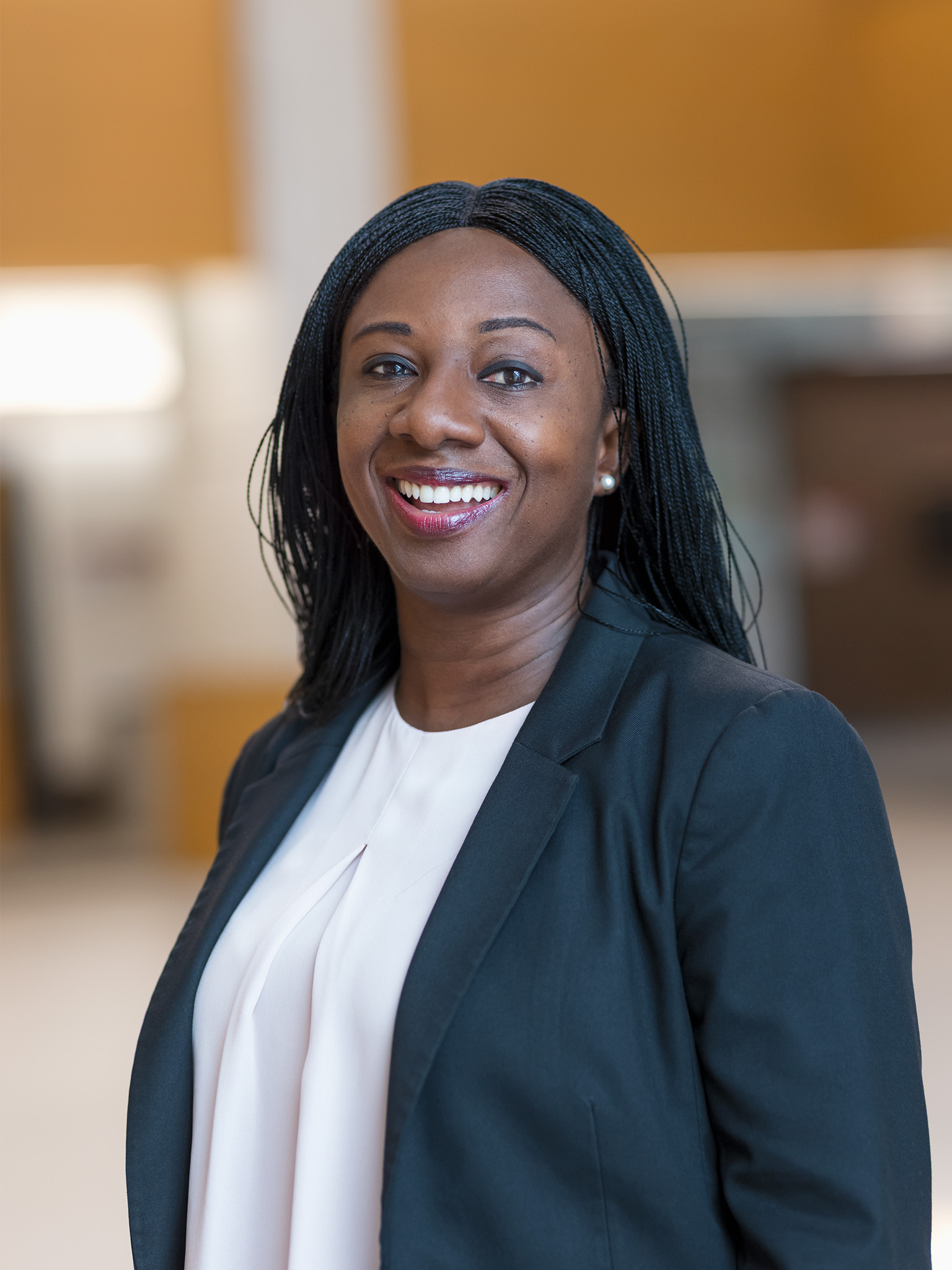Features
Closing the Justice Gap
by Carolyn Gruske
photography by Horst Herget
When Naa Ode Lansana (JD ’21) walked into the Barbra Schlifer Commemorative Clinic in downtown Toronto, she didn’t just gain legal experience – she learned how to listen. “When you’re approaching a client through a trauma-informed lens, you hear their stories differently,” she says. “You listen for what’s unsaid, rather than rushing to ask them to tell their story.”
For Lansana and other Osgoode Hall Law School students, the clinic offers more than hands-on training – it’s a transformative experience. As part of the Feminist Advocacy: Ending Violence Against Women Clinical Program, students spend a year working directly with survivors of violence, many of whom face barriers related to race, gender, immigration status or socioeconomic circumstances.
The program not only equips students with practical legal skills, but also instils empathy and a deeper understanding of justice.
The Barbra Schlifer Clinic was founded in memory of a young lawyer who was tragically murdered on the day she was called to the bar. Today, it provides free legal services to marginalized women and gender-diverse people dealing with family, criminal and immigration law matters. The clinic also fills critical social service gaps by helping clients access housing, mental health support and translation services.
In 2017, Osgoode Professor Janet Mosher launched the Feminist Advocacy program in partnership with the clinic. Each year, 12 to 14 second-year law students are selected for this intensive elective course. They spend one day a week at the clinic working alongside mentors and another day in seminars exploring feminist legal theory and trauma-informed lawyering.
“The idea is to expose students to the gap between ‘law on the books’ and ‘law on the street,’” explains Sonia Lawrence, a professor at Osgoode and co-academic director of the program. “It’s about understanding how systems don’t always work as they should, or how they can be incredibly difficult for people to navigate.”

At its core, the program is client-driven. Students quickly learn that justice isn’t always about what they think is right – it’s about what their clients need. For example, in cases of intimate partner violence, students may assume leaving an abusive partner is the best course of action. But socioeconomic or immigration factors often make that impossible.
“The ethos of the clinic is about following the client’s lead,” Lawrence says. “Sometimes that means waiting until they’re ready – or realizing they may not want what you think they should.”
This approach is rooted in trauma-informed lawyering, which emphasizes empathy and avoids victim-blaming. Students learn how to reduce clients’ anxieties about legal processes while acknowledging their trauma. It’s a lesson that stays with them long after graduation.
For Lansana, who now practises family and civil litigation in Toronto, this training was invaluable. “You realize your words have weight,” she says. “Whether it’s writing legal documents or filling out forms for compensation boards, you’re shaping someone’s story, and that has real consequences.”
Soliyana Yared (JD ’24), who worked at the clinic before articling at an immigration law firm, created resources for self-represented litigants during her placement. She wrote guides explaining court forms and processes – tools that empower individuals who can’t afford legal representation.
You listen for what’s unsaid, rather than rushing to ask them to tell their story
Yared also conducted research on anti-SLAPP (strategic lawsuit against public participation) laws and their impact on survivors of intimate partner violence. Her paper was accepted for publication in the University of Toronto Journal of Law and Equality. “The skills I developed at the clinic apply far beyond family-violence law,” she says. “They’ve shaped how I approach my career.”
The program isn’t just about teaching marketable skills – it’s about fostering reflection and growth. Twice each semester, students participate in rounds inspired by medical school practices. These sessions allow them to discuss challenges, share insights and connect their practical work with academic learning.
“We want students to reflect on what they’re learning,” Lawrence says. “How do these experiences shape their understanding of justice? How do they integrate this knowledge into their broader education?”
As beneficial as the program is for its graduates, Lawrence says there are no plans to expand it or offer it to a wider number of students, partly due to the costs of running the program for both York and the clinic.
York, she adds, directs funding, including donations, to experiential learning partners such as the Schlifer Clinic, and the clinic, which also accepts donations, is managed in “an incredibly dynamic and creative way because it has to hustle resources all the time.”
For many students, working at the Barbra Schlifer Clinic leaves an indelible mark, not just on their careers, but on their understanding of advocacy and justice.
“It changed how I see my role as a lawyer,” Lansana says. “It’s not just about knowing the law – it’s about understanding people.” ■